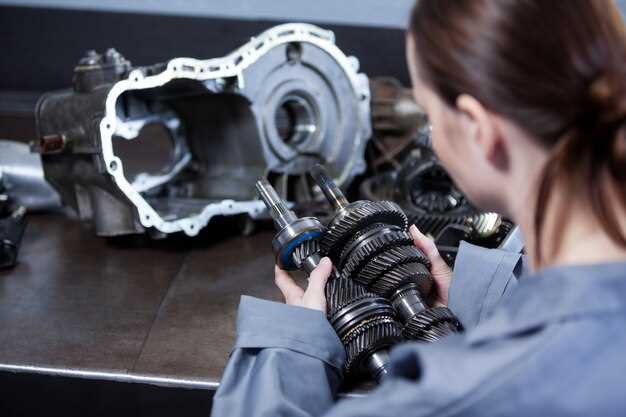How to Choose the Best Coilovers for Your Car


When it comes to enhancing your vehicle’s performance and aesthetics, coilovers are a popular upgrade among car enthusiasts. These adjustable suspension systems allow for improved handling, better ride comfort, and the ability to lower the vehicle’s stance for a more aggressive look. However, selecting the right coilovers can be a daunting task, given the myriad of options available on the market.
Understanding the key features and benefits of coilovers is essential in making an informed decision. From adjustable damping settings to spring rates, each characteristic plays a significant role in how your car will handle on the road or track. Moreover, compatibility with your specific make and model is crucial to ensure optimal performance and safety.
In this comprehensive guide, we will explore the factors to consider when choosing coilovers, including budget, performance goals, and driving conditions. Whether you’re looking to enhance your daily driver or prepare your vehicle for track days, this guide will provide you with the necessary insights to select the best coilovers for your needs.
Understanding the Various Types of Coilovers
Coilovers are a popular suspension upgrade that combines a spring and shock absorber into a single unit, providing adjustable ride height and improved handling. Understanding the different types of coilovers is crucial for making an informed choice tailored to your driving needs.
The first type is Standard Coilovers, which are designed primarily for street use. They typically offer basic height adjustability and may have some dampening settings. Standard coilovers provide an excellent balance between comfort and performance, making them suitable for daily driving without compromising ride quality significantly.
Next are Performance Coilovers, which are engineered for enthusiasts seeking improved handling and responsiveness. These units often feature more advanced dampening adjustments, allowing for fine-tuning to suit various driving conditions. Performance coilovers enhance vehicle dynamics, making them ideal for spirited driving on twisty roads or track use.
Race Coilovers take performance to the next level, designed specifically for competitive motorsport applications. They offer extensive adjustability in height, compression, and rebound settings, enabling drivers to achieve optimal setup for specific tracks or conditions. These coilovers often use lightweight materials for weight reduction and enhanced performance under extreme driving conditions.
Air Coilovers represent a modern twist on traditional coilover systems. They utilize air springs instead of conventional coils, offering adjustable height and improved ride quality. Air coilovers are particularly advantageous for those seeking versatility, as they allow easy adjustments based on load and driving requirements, making them suitable for both daily driving and show applications.
Lastly, Budget Coilovers are available for enthusiasts who want to improve their suspension without breaking the bank. While they may lack advanced features and durability compared to higher-end options, budget coilovers can provide a noticeable improvement over stock suspension, making them suitable for casual driving or entry-level modifications.
Selecting the right type of coilovers is essential, as each offers unique benefits tailored to different driving styles and preferences. Understanding these variations will help in finding the optimal solution for enhancing your vehicle’s performance and ride quality.
Key Features to Look for in Coilovers
When selecting coilovers for your vehicle, several essential features should guide your decision. First, consider the adjustability options. Coilovers with adjustable ride height and damping settings allow for personalized tuning to match driving style and road conditions. This versatility enhances both performance and comfort.
Next, look for high-quality materials and construction. Coilovers made from durable materials, such as aluminum or high-strength steel, ensure resistance to corrosion and longevity. Additionally, components like threaded shock bodies and robust springs contribute to the overall reliability of the suspension system.
Another critical aspect is the type of dampers used in the coilovers. Monotube dampers typically offer better performance and heat dissipation compared to twin-tube designs. They provide more consistent performance during high-stress conditions, which is beneficial for both everyday driving and track use.
Spring rates are also crucial. Choosing the right spring rates affects the handling characteristics of the car. Stiffer springs improve responsiveness but may compromise ride comfort. Therefore, selecting a balance that suits your driving needs is essential.
Compatibility with different adjustments is vital. Some coilovers come with features like independently adjustable preload and ride height, allowing for greater customization of the suspension setup. This adaptability can be particularly useful for those who regularly change their driving environments.
Finally, reviews and experiences from other users should not be overlooked. Researching feedback can provide insight into the performance, reliability, and overall satisfaction of the coilovers you consider. Make sure to choose a reputable brand with a proven track record to ensure quality and support.
How to Determine the Right Coilover Height for Your Vehicle

Determining the right coilover height is essential for achieving optimal performance and aesthetics in your vehicle. First, consider the purpose of your car. Track enthusiasts may prefer a lower ride height for better handling, while daily drivers might benefit from a moderate height for comfort and practicality.
Next, measure the current ride height of your vehicle. This can be done by measuring from the center of the wheel hub to the fender lip or the ground. Note these measurements as they will serve as a baseline for adjustments. Keep in mind that different vehicles have different optimal ride heights, so refer to manufacturer specifications or expert recommendations for guidance.
After setting a baseline, think about your desired stance. Aesthetic preferences can vary widely; some might favor a flush look with the wheel arch, while others might want a more aggressive, lowered appearance. However, it’s crucial to strike a balance between visual appeal and functional performance. Lowering your vehicle too much can lead to issues such as poor suspension travel, increased wear on components, and decreased ride quality.
Furthermore, consider clearance and usability. If your vehicle frequently encounters rough roads or speed bumps, ensure that the chosen height allows for enough ground clearance to avoid scraping or damaging the undercarriage. Adjusting coilover height can also affect the camber settings, so be prepared to realign your vehicle after making these adjustments.
Finally, test and iterate your settings if possible. Many coilovers allow for fine-tuning, so start with a moderate adjustment and gradually lower the height while road-testing the vehicle. This process will help you find the sweet spot where performance, comfort, and aesthetics align. Always remember that safety should be the priority, so do not compromise structural integrity for the sake of looks.
Assessing Spring Rates and Their Impact on Performance
Spring rates play a crucial role in the performance characteristics of coilovers, as they directly influence how your vehicle responds to road conditions and driver inputs. A spring rate, measured in pounds per inch (lbs/in) or Newtons per millimeter (N/mm), indicates how much weight a spring can support before compressing. Selecting the right spring rate is essential for achieving the desired balance between comfort, handling, and overall driving experience.
A stiffer spring rate increases resistance to compression, which can lead to improved handling and reduced body roll during cornering. However, this also results in a harsher ride quality, particularly on uneven surfaces. Conversely, a softer spring rate enhances ride comfort but may cause excessive body movement, resulting in poor handling dynamics at high speeds.
To better understand the influence of spring rates, consider the following table that summarizes the potential effects of different spring rates on vehicle performance:
| Spring Rate (lbs/in) | Ride Quality | Handling Characteristics | Ideal Usage |
|---|---|---|---|
| Soft (100-200) | Comfortable, absorbs bumps well | Less responsive, more body roll | Daily driving, off-road vehicles |
| Medium (200-400) | Balanced comfort and performance | Improved response, controlled body roll | Weekend cars, some track usage |
| Stiff (400+) | Harsh, road imperfections felt | Excellent handling, minimal body roll | Track days, competitive racing |
When determining the optimal spring rate for your coilovers, consider factors such as the vehicle’s weight, intended usage, and personal driving style. Additionally, suspension setup, including damping settings, should work in conjunction with spring rates to achieve the desired performance. Experimenting with different spring rates can help you find the ideal balance for your specific requirements, enhancing both comfort and performance on the road.
Installation Tips for Coilovers: DIY vs Professional Help
Installing coilovers can significantly enhance your vehicle’s performance and handling characteristics. Before you begin, consider the pros and cons of a DIY installation versus seeking professional help.
If you opt for a DIY installation, ensure you have the necessary tools, including a socket set, torque wrench, and spring compressors. Familiarize yourself with the specific coilover model and your vehicle’s suspension system through detailed manuals or online tutorials. Begin by removing the wheels and old suspension components systematically. Take photos during disassembly to aid in reassembly. Pay close attention to torque specifications for all fasteners to avoid component failure.
On the other hand, seeking professional assistance can save time and reduce the risk of errors. Professionals have experience and specialized tools to ensure a precise installation. They can also provide valuable insights into suspension tuning, aligning your vehicle correctly after the installation. If you choose to go this route, verify the shop’s reputation and expertise in coilover installations to ensure quality work.
Ultimately, the decision hinges on your mechanical skills, available tools, and time constraints. If you’re confident in your abilities and have the right resources, a DIY approach can be rewarding. However, if you’re unsure, professional help can provide peace of mind and optimal performance. Always prioritize safety and reliability in the installation process.
Common Mistakes to Avoid When Upgrading to Coilovers
When upgrading to coilovers, many car enthusiasts make mistakes that can compromise performance and safety. Here are the most common pitfalls to avoid:
- Neglecting Vehicle Compatibility: Always ensure that the coilovers are designed for your specific make and model. Mismatched components can lead to improper fitment and compromised handling.
- Overlooking Installation Quality: Professional installation is crucial. Poorly installed coilovers can cause alignment issues, uneven tire wear, and ultimately, unsafe driving conditions.
- Ignoring Alignment After Installation: Failing to perform a proper wheel alignment after installation can lead to handling issues and increased tire wear. Always get an alignment check post-upgrade.
- Choosing Coilovers Based Solely on Price: While budget is important, opting for the cheapest coilovers can lead to subpar performance and durability. Research brands and read reviews to find a balance between cost and quality.
- Underestimating Spring Rates: Selecting incorrect spring rates for your driving style and conditions can negatively affect ride quality. Consider the intended use–whether it’s daily driving, track use, or off-roading.
- Not Considering Ride Height Adjustability: Many coilovers offer ride height adjustability. Failing to select a height range that suits your driving needs and preferences can hinder performance and comfort.
- Overlooking Maintenance: Coilovers require regular maintenance to ensure optimal performance. Neglecting this aspect can lead to premature wear and decreased effectiveness.
- Not Testing Settings: After installation, make minor adjustments to damping settings and ride height. Test these settings under various driving conditions to find the right balance for your needs.
- Avoiding Research on Brands: Not all coilover brands are created equal. Spend time researching to find reputable brands known for quality and customer support.
- Disregarding Other Suspension Components: Upgrading to coilovers affects the entire suspension setup. Consider replacing or upgrading related components, such as sway bars and bushings, for improved performance.
By avoiding these common mistakes, you can maximize the benefits of your coilover upgrade, enhancing your car’s performance and ride quality.
